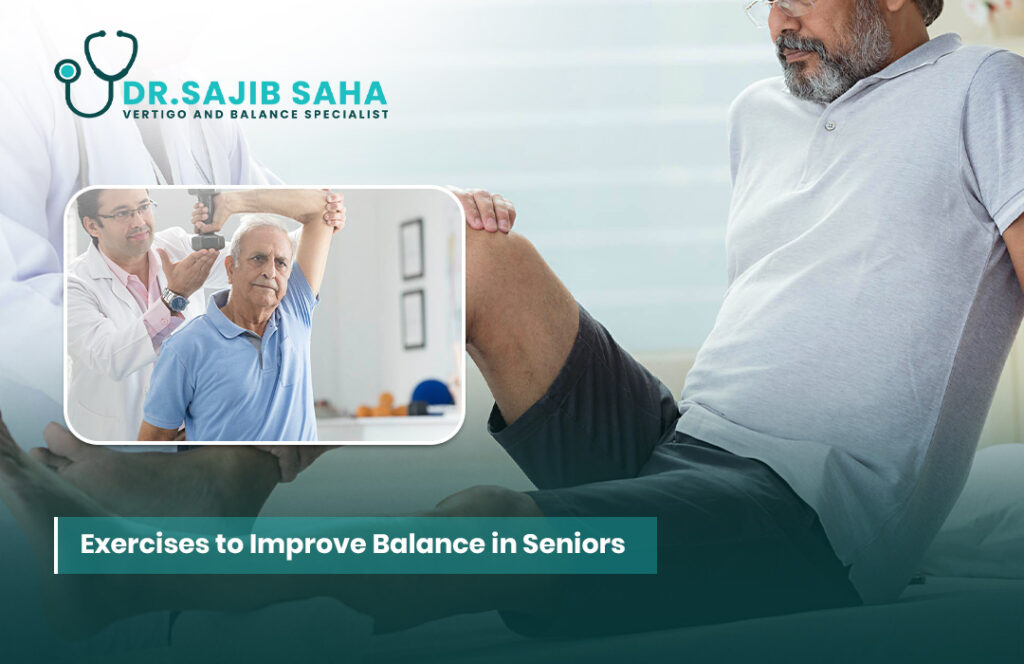As we age, maintaining good balance becomes increasingly important. Seniors are more prone to falls, which can lead to serious injuries such as hip fractures or head trauma. According to medical research, regular balance exercises can significantly reduce the risk of falls, improve mobility, and enhance overall quality of life.
In this article, we will explore the most effective balance exercises for seniors, their benefits, and safety tips to follow.
Why Balance Exercises Are Important for Seniors
- Prevention of falls: Improves stability and reduces the risk of accidental slips.
- Better mobility: Makes daily activities like walking, standing, and climbing stairs easier.
- Strength and coordination: Enhances muscle strength and body coordination.
- Boosted confidence: Helps seniors move more independently without fear of falling.
Top Balance Exercises for Seniors
1. Heel-to-Toe Walk
- Stand upright and place the heel of one foot directly in front of the toes of the other.
- Walk forward slowly in a straight line.
- Repeat for 10–20 steps.
Benefit: Improves coordination and strengthens lower body muscles.
2. Single-Leg Stand
- Stand behind a sturdy chair.
- Hold the chair lightly for support and lift one foot off the ground.
- Hold the position for 10–15 seconds, then switch legs.
- Repeat 3–5 times per leg.
Benefit: Enhances balance and stability.
3. Side Leg Raises
- Stand upright while holding onto a chair.
- Slowly lift one leg to the side without bending at the waist.
- Hold for 2–3 seconds, then bring the leg down.
- Repeat 10–15 times on each side.
Benefit: Strengthens hip muscles and supports walking balance.
4. Tai Chi (Gentle Movements)
- Practice slow, flowing movements while focusing on posture and breathing.
- This can be done in a class or at home by following simple tutorials.
Benefit: Improves both physical balance and mental relaxation.
5. Marching in Place
- Stand tall and march in place by lifting knees one at a time.
- Do this for 1–2 minutes.
Benefit: Builds coordination and prepares the body for walking safely.
6. Chair Sit-to-Stand
- Sit in a sturdy chair with arms crossed over your chest.
- Slowly rise to a standing position without using your hands, then sit back down.
- Repeat 10–12 times.
Benefit: Strengthens leg muscles and improves balance while standing up.
Safety Tips for Seniors While Exercising
- Always exercise near a sturdy chair or wall for support.
- Wear comfortable shoes with non-slip soles.
- Start slow and increase intensity gradually.
- Stop immediately if you feel dizzy, unsteady, or short of breath.
- Consult a doctor before starting new exercises, especially if you have chronic health conditions.
When to Seek Medical Help
If you notice frequent dizziness, loss of balance, or difficulty walking, it may be a sign of an underlying medical issue. In such cases, professional medical evaluation is essential.
FAQs
1. How often should seniors do balance exercises?
At least 2–3 times a week is recommended for effective results.
2. Are these exercises safe for seniors with arthritis?
Yes, most of them are low-impact, but always consult a doctor before starting.
3. Can balance exercises also improve memory and focus?
Yes, exercises like Tai Chi improve both physical and cognitive functions.
4. What if a senior cannot do standing exercises?
Chair-based balance exercises are a safe and effective alternative.
Conclusion
Balance exercises are one of the most effective ways for seniors to maintain independence, reduce fall risks, and live a healthier life. By practicing simple movements like heel-to-toe walking, leg raises, and Tai Chi, seniors can significantly improve stability and confidence.
👉 If you or a loved one struggles with dizziness, imbalance, or frequent falls, book an appointment with Dr. Sajib Saha today for professional evaluation and treatment.
